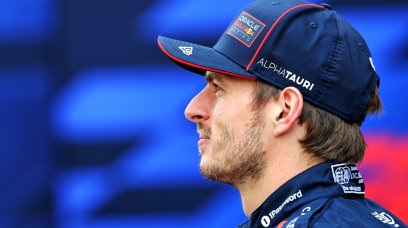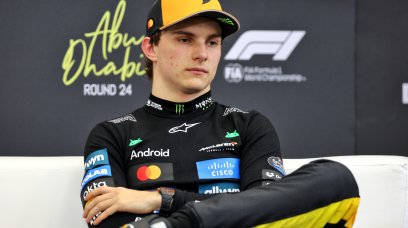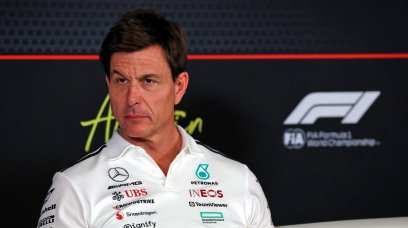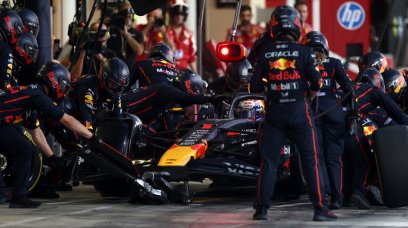Over the years the United States Grand Prix had its highlights. In the 1960s Phil Hill became the first American world champion and Dan Gurney won four Grands Prix, including one in his self-designed Eagle. Mario Andretti became America’s last race winner and world champion in 1978, and in 1982 the US hit a record three races in one year in Long Beach, Detroit and Las Vegas. But since then, F1’s popularity plummeted. There wasn’t a single US GP between 1991 and 2000, and Americans never really embraced it on TV due to the tricky European timezones the majority of races were held. In 2000 the US GP returned to the iconic Indianapolis Motor Speedway, home of the Indy 500 which is the largest single-day sporting event in the world. Even if the infield track that staged F1 was a bit underwhelming, the attendance numbers were pretty good. But then June 19th, 2005 came along…
F1's humiliation
Two critical things had changed in the 2005 F1 season; the downforce generated by the cars which increased the vertical load on the rear tyres and Indianapolis had been partly resurfaced. Even though the tyres were made from harder compounds that year due to the ban on tyre changes during pit stops, Michelin still opted for a compound with softer sidewalls compared to the Bridgestone. This provided more consistent grip throughout a stint, as it meant a larger tread pattern on the asphalt. Unbeknownst to Michelin, this tyre construction along with the new surface at Indianapolis caused significant problems. At that time F1 had a tyre war between them and Bridgestone, who was able to prepare for the race due to its ties to Firestone. This tyre maker supplies the IndyCar series and had already raced on this surface earlier in the year. Through that, Bridgestone knew that it should supply its Ferrari, Jordan and Midland teams with much stronger and harder compound tires. After tyre-related practice crashes put Michelin cars in the wall and Ralf Schumacher in the hospital, the manufacturer asked for emergency measures, like an extra chicane, or to allow tyre changes again, for this race only. But the FIA rejected every suggested compromise due to the safety issues they posed. With that, the infamous image of only six (Bridgestone) cars took the start and finished the race. The crowd was furious, chucking bottles and beers cans on the track, with many believing this was the death of F1 in the USA.
Birth of the Circuit of the Americas
Indianapolis would host two more races before its contract expired in 2007. The US GP disappeared off the calendar again, until its return in 2012 at the Circuit of the Americas (COTA) in Austin. After a tricky (re)start, F1 has now reached new heights in the US as the track celebrated its ten-year anniversary. The celebrity and business presence in Austin last weekend was notable, including stars such as Brad Pitt, Chloë Grace Moretz, Ed Sheeran, Shaquille O'Neal, and Pharrell Williams, along with Apple CEO Tim Cook (who rather unenthusiastically waved the chequered flag) and former Disney CEO Bob Iger. With similar anticipation at a race in Miami this year and the addition of the iconic Las Vegas strip in 2023, which is expected to sell out, F1 is commanding the attention of the American market like never before. There are many theories about this success, but let’s ask an insider. RacingNews365.com spoke with Jacques Villeneuve, the 1995 IndyCar champion and 1997 F1 World Champion who knows both F1 and the American market well, and isn’t shy about sharing his insights.
The Netflix effect
Jacques Villeneuve: "At Indy 2005, I was with Sauber, a Michelin runner. The Michelin teams had suggested solutions (Even solutions where they wouldn’t receive points), because it was important to offer something to the fans. But Ferrari didn’t want to play along. It was very destructive for F1 in North America because that wasn't a race, that wasn't a show. It did a lot of damage. "The last few years, F1 started growing, not just in the States, but everywhere. We never expected that it could reach this market, but it just exploded. Which is crazy. America already has a lot of its own 'world championships', and it was difficult to imagine a global sport suddenly becoming so popular." RN365: We hear a lot about the impact of Netflix, but is Drive to Survive really that important? JV: "Netflix may have given some people the initial push, and created an interest. But F1 is the biggest show in the world, and there’s so much money involved, and this makes it interesting to people. Many may deny this, but it’s true. The more expensive it is, the more exciting it is. That’s just human nature. Especially since Stefano (Domenicali) started running the show, it really made leaps forward. There’s a very good mix of American and European cultures and racing passion now. All of this together has really, really helped the sport." RN365: COTA owner Bobby Epstein has entered into discussions to race both F1 and MotoGP on the same weekend. He is always looking to create a better show, with concerts and everything. JV: "Yeah, the whole weekend is one big event, and some people actually come for the concerts. But ultimately the sport is still intact. That’s why the original fans keep coming, but now it’s interesting for their kids too. Those kids may know it from Netflix, and now it’s something they can do together. Once you have this link of parents to kids, and they can share this, it blooms." RN365: Miami was added this year, Las Vegas will be added next year, so the US will have three GPs again. JV: "Because of their locations, these three races make perfect sense. You know Miami, it’s barely in the US, it’s on the East Coast. This one in Austin (halfway between Miami and Las Vegas) is well established now. If it had been added last, it would have been harder, but COTA has already built its credibility. And adding Vegas (in the West) is just logical, it’s where F1 should always have been. I expect it to be a crazy event." RN365: Andretti Autosport is applying to become the second American team on the F1 grid. Does F1 need a strong American name like this? JV: "We don’t specifically need an American team; we need more teams. We only have 20 cars on the grid, and it’s not enough. Imagine a team pulls out and you’re left with 18 cars. What do you do? It’s risky to race with only 20. I think 26 cars on the grid was a good number. I liked it even better when we had pre-qualifying. You had the big teams, but you also had the ‘funny’ teams that would just come and try. Sometimes there were 40 cars. There were a few spots reserved, and if they were fast enough, they would be allowed in. I think that was a good balance." RN365: Andretti may be nicknamed the royal family of American racing , but F1, and especially Toto Wolff, didn’t give them a royal welcome… JV: "F1 teams are very protective, an extra team makes the pie smaller. Although only the top 10 teams share in the TV revenues anyway. I’m not 100% sure why there’s resistance. But F1 is a small club, they don’t like new people to join. Andretti is a big name though, with a big budget. They should be there." This article was written by Eltjo Nieuwenhuis.
Most read







